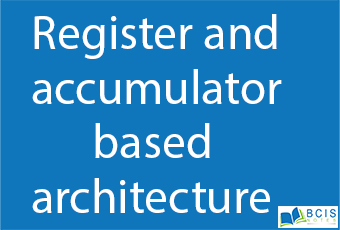
Register-based and accumulator based architecture
A register-based CPU architecture has one or more general-purpose registers (where “general purpose register” excludes special-purpose registers, like stack pointer and instruction pointer).
Register Based Architecture
- All the arithmetic and logical operation consist of the operands of any registers (ABCD etc). The input/output operations here register A and register B are similar.
- The internal architecture of 8086 shows that the registers A, B, C, D and others directly with the ALU.
- Data can enter into the ALU from any registers.
- For I/O operation register A only can be used.
- The advantage of register-based architecture is extendibility and flexibility in programming.
- The processor will be enhanced in register-based architecture.
- The disadvantage is the requirement of complex circuitry.
An accumulator-based CPU architecture is a register-based CPU architecture that only has one general-purpose register (the accumulator).
Accumulator Based Architecture
- An accumulator is a most significant register then compared to other registers and most of the arithmetic and logic operations are performed using the accumulator performed via the accumulator.
- The internal architecture of 8085 shows that the registers B, C, D, E, H, and L are connected with the ALU through the accumulator and temporary register.
- Data can only enter into the ALU from the accumulator and the output of the ALU can be stared in accumulator through the data bus.
You may also like Different level of parallelism

Leave a Reply